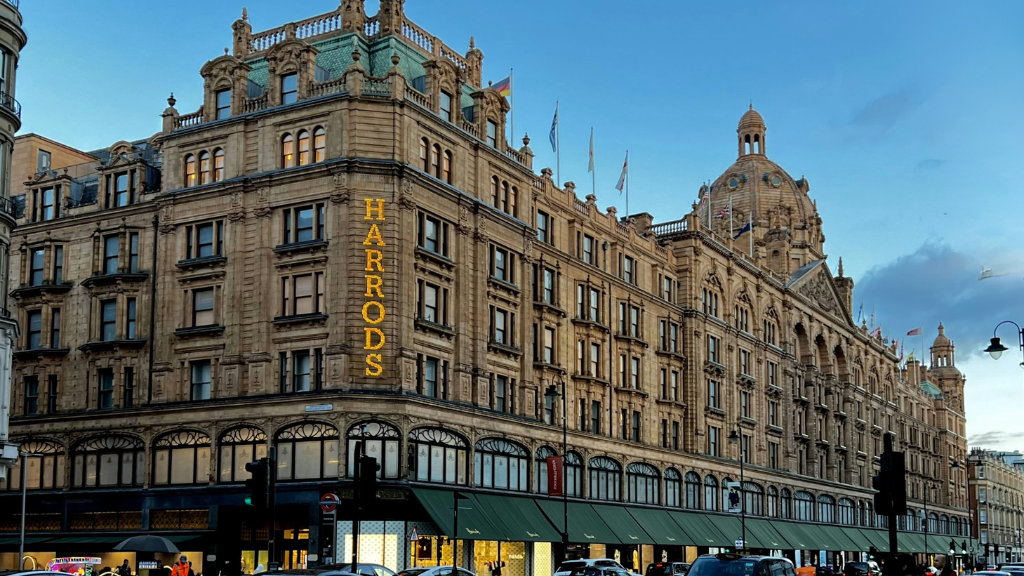
Lydia Delectorskaya: the Russian émigrée who transformed Henri Matisse’s life
The relationship between artist Henri Matisse and his assistant Lydia Delectorskaya defies the classic trope of the Genius and his Muse. For over 20 years, Lydia was both Matisse’s model and assistant, steadfastly insisting that their connection was purely platonic — rooted in spiritual closeness and friendship. Yet, the passionate Frenchman created more than 90 portraits of Delectorskaya, describing her as his trusted support, inspiration, and “light of his eyes.” Afisha.London magazine delves into the extraordinary bond between the master of colour and the Russian émigrée, whose presence breathed new life into Matisse’s creative world.
The making of a master of colour
Henri Matisse, the future titan of modern art, was born on 31 December 1869 into the prosperous family of Émile Hippolyte Matisse, a grain merchant in the northern French town of Le Cateau-Cambrésis. Young Henri received an excellent education and, despite his father’s hopes for him to take over the family business, went to Paris to study law at the École de Droit. By 1888, Matisse was working as a clerk for a solicitor in Saint-Quentin, and the world might never have heard of this great artist had it not been for an emergency appendectomy that changed the course of his life.
During his lengthy recovery, Henri’s mother, Éloise, who dabbled in painting ceramics, brought him a box of art supplies to lift his spirits. Over the next two months, confined to his hospital bed, Matisse painted vibrant recreations of colourful postcards, discovering a passion that would redefine his life.
From that point on, Matisse knew he wanted to be an artist. He defied his father’s wishes once again, enrolling in a drawing school, and in 1891, left the legal profession entirely to return to Paris and study at the Académie Julian. This prestigious academy, known for its illustrious alumni and its progressive acceptance of female students, became a launching pad for Matisse’s artistic career. Incidentally, one of the academy’s notable students was Maria Bashkirtseff, a Ukrainian-born artist and writer from the Poltava region of the Russian Empire. Bashkirtseff became a celebrated figure in Paris, renowned for her psychological diaries, which captivated the intellectual circles of 19th-century Europe and Russia.
- Henri Matisse, 1913. Photo: Alvin Langdon Coburn, Public domain, via Wikimedia Commons
- ‘Woman with a Hat’ 1905. Photo: ©Succession H. Matisse, Paris / Artist Rights Society (ARS), New York
Returning to Henri Matisse, we find an artist whose talent and ambition flung open the doors of Paris’s vibrant art world. He studied under the mystical recluse Gustave Moreau, sketched tirelessly at the Louvre, and fell under the spell of Vincent van Gogh’s work, embracing Impressionism with fervour. From John Russell, an Australian Impressionist and disciple of Van Gogh, Matisse absorbed the principles of colour theory, which became the foundation of his artistic vision. His relentless pursuit of the perfect palette made him the undisputed master of colour, a legacy cemented in his iconic works.
Pieces like The Joy of Life, with its unbridled sensuality, Woman with a Hat, brimming with intrigue, and Luxe, Calme et Volupté, exuding languid luxury, epitomise Fauvism. This bold style, marked by vivid colour contrasts and extravagant brushwork, reflected Matisse’s unorthodox approach to expressing emotion through paint.
Amélie: wife, critic, and the cost of devotion
On 10 January 1898, Matisse married Amélie Parayre, the daughter of a schoolteacher from Toulouse. Their honeymoon in London was spent studying the works of J.M.W. Turner, a romantic visionary whose mastery of light and colour prefigured Impressionism. For the next three decades, Amélie became Matisse’s unwavering pillar: his muse, fiercest critic, and steadfast supporter.
Read also: Somerset Maugham: writer, secret agent in Russia, and favourite of the Soviet intelligentsia
Yet life with an unrecognised genius was anything but idyllic. Early in their marriage, Amélie discovered Matisse had a daughter, Marguerite, from a previous relationship with one of his models. Financial struggles defined their first decade together; Matisse’s sporadic income barely supported his relentless artistic experimentation. During these lean years, it was Amélie’s millinery shop that kept the family afloat.
- Amélie, 1898. Photo: See page for author, Public domain, via Wikimedia Commons
- ‘Portrait of Madame Matisse,’ 1905. Photo: @Succession H. Matisse/VISDA 2024
Matisse’s enduring admiration for women, particularly dark-haired beauties with fiery temperaments, posed another challenge. While his wife often turned a blind eye to fleeting romances, she could not ignore his growing emotional distance. For a time, Amélie and Marguerite were his primary muses, yet his focus on other models signalled a shift.
By all outward appearances, Matisse and Amélie seemed a happy couple. They raised two sons, and his career steadily advanced. However, by the 15th year of their marriage, friends noted a growing chasm. Amélie appeared less frequently in his portraits, and the creative collaboration they once shared began to dissolve, as his art became a deeply personal endeavour.
Read also: The love and hate story of artist Pablo Picasso and Ballets Russes dancer Olga Khokhlova
Even as cracks in their marriage widened, Amélie could not have anticipated the upheaval that would follow the arrival of a young Russian émigrée in 1932. The impoverished Lydia Delectorskaya, seeking work, stood at the Matisses’ doorstep. Her modest appearance was far from Matisse’s usual type, yet to Amélie’s dismay, Lydia would soon capture not only the artist’s attention but also his heart.
This unassuming Russian woman would go on to become not just Matisse’s most enduring muse but the key to a profound transformation in his life and work. For Amélie, however, Lydia’s presence marked the beginning of the end of an era she had built alongside her husband.
Lydia: the Russian Émigrée who entered Matisse’s world
The life of Lydia Delectorskaya, whose elegant surname seemed destined for the circles of high society, began unremarkably, as did the lives of many born into the turbulent early 20th century. Born on 23 June 1910 in Tomsk, the daughter of a regional doctor, Lydia’s early years were filled with a sense of stability. Today, the wooden house where she spent her childhood stands as a point of fascination, with visitors tracing the steps of a woman whose life has since become the stuff of legend.

Lydia Delectorskaya. Photo: ©Archives Henri Matisse
Lydia’s idyllic childhood came to an abrupt and tragic end. According to one account, her parents succumbed to a cholera epidemic when she was just 13. Epidemics of cholera, typhus, and other deadly diseases ravaged Siberia at the time, claiming thousands of lives. Left orphaned, Lydia was taken in by her maternal aunt, who brought her to Harbin, China — a haven for those fleeing Soviet rule in search of stability and freedom.
In Harbin, Lydia attended a Russian school while she and her aunt relied on odd jobs to make ends meet. Eventually, they left for France, travelling under a Nansen passport — a document issued to stateless refugees, particularly those displaced from Russia after 1922.
Nansen passports were introduced on 5 July 1922 at the League of Nations conference in Geneva. Spearheaded by Fridtjof Nansen, the Norwegian polar explorer and humanitarian, these documents provided refugees with formal identification, saving millions from poverty and obscurity.
Upon arriving in France, Lydia married, but her happiness was short-lived. Though her divorce was not finalised until 1936, her marriage had effectively disintegrated years earlier. Alone in a foreign land, Lydia faced the daunting challenge of forging a new path.
- Henri Matisse in 1933. Photo: Carl Van Vechten, Public domain, via Wikimedia Commons
- Étude of a Model (Lydia Delektorskaya), 1935. Photo: © 1998-2024 State Hermitage Museum / Succession H. Matisse
Determined to honour her family’s legacy, she dreamed of becoming a doctor and was even accepted into the medical faculty at the Sorbonne. However, the tuition fees were far beyond her reach. Struggling to survive, Lydia found herself in Nice, where a chance encounter with a job posting altered her life forever. The notice sought an assistant for an artist — a man named Henri Matisse.
Read also: Modernist Legend Henry Moore and His Muse, Irina Radetzky
At the time, Lydia had no idea who Matisse was. Yet her quiet demeanour, diligence, and humility immediately impressed Amélie, Matisse’s wife. Protective of her husband and wary of the young women who often served as his models, Amélie valued Lydia’s unassuming nature. What began as a modest household role would soon grow into something far more significant.
- ‘Young Woman in a Blue Blouse (Portrait of L. Delektorskaya)’, 1936. Photo: © 1998-2024 State Hermitage Museum / Succession H. Matisse
- Portrait of Lydia Delektorskaya, 1947. Photo: © 1998-2024 State Hermitage Museum / Succession H. Matisse
An indispensable presence
Initially, Lydia was little more than a shadow in Matisse’s studio, completing tasks unnoticed by the artist. But when Amélie fell seriously ill and could no longer manage the household, Lydia was offered a permanent position. Slowly, she became indispensable to the Matisse household, handling both practical and artistic responsibilities.
Three years later, Matisse finally turned his artistic eye toward Lydia, asking her to model for him. This was a turning point — one that Amélie could not accept. While Lydia’s presence had once been a source of relief for the ailing matriarch, her role as Matisse’s muse introduced a tension that would forever alter the dynamics of the household.
Lydia’s journey from an unnoticed assistant to a central figure in Matisse’s life marked the beginning of a partnership that would redefine the final decades of his work. Yet, her rise was not without its personal cost, both for herself and for those around her.
A second wind for a genius
Lydia Delectorskaya was not Matisse’s first connection to Russia. In the autumn of 1911, the artist visited the Russian Empire at the invitation of Sergei Shchukin, a prominent patron and collector who became one of Matisse’s greatest supporters. Shchukin had discovered Matisse in 1906 and went on to purchase 37 of his works, decorating his Moscow mansion on Bolshoy Znamensky Lane with the bold and unconventional paintings. Among these commissions was the provocative panel The Dance, created in two versions, one of which now resides in the Hermitage Museum in St. Petersburg.
Read also: How Diaghilev’s “Saisons Russes” influenced the European art world of the 20th century
During his time in Russia, Matisse was deeply moved by the old Orthodox icons, which he described as “great art.” Their heartfelt simplicity captivated him, much as Lydia’s quiet presence would years later. Behind her unassuming exterior, Matisse saw sincerity, devotion, and an unshakable belief in his talent.

Matisse’s ‘Music’ in the Hermitage Museum. Photo: Margarita Bagrova
The muse awakens
When Lydia began modelling for Matisse in 1935, the artist experienced a creative renaissance. His work blossomed with new meaning and vibrancy. Beyond posing for his art, Lydia managed the household, tended to the tropical garden that inspired many of his works, and provided companionship to the ailing Amélie, whose fragile nerves confined her to reading and strolling in the lush, jungle-like greenery.
Read also: Flappers — emancipated women of the 20s in the West and in Russia
Maintaining the garden, with its intricate irrigation system, became another of Lydia’s responsibilities, as did managing the increasingly complex logistics of Matisse’s life. To outsiders, she seemed like a “Snow Queen” or a “Beautiful Slave” serving the artist. Lydia, however, preferred a different metaphor. In conversations with English writer and Matisse biographer Hilary Spurling, she likened herself to the magical raven in Russian folklore, the creature that sprinkles life-giving water on the hero slain by bandits. “I’m that raven,” Lydia would say with a smile.
Invalid slider ID or alias.
The turmoil of Amélie
By the summer of 1939, Matisse had created around 90 paintings featuring Lydia, the most famous of which is Pink Nude. However, it wasn’t the art that infuriated Amélie — it was Lydia’s growing presence in their home and her undeniable importance to Matisse’s life. Amélie’s anger boiled over, and she made several attempts to dismiss Lydia, at times forcing her to leave. Yet Matisse always found a way to bring her back.

‘Pink Nude’, 1935. Photo: © The Baltimore Museum of Art: The Cone Collection / Mitro Hood
The tension eventually led to Amélie filing for divorce, leaving Matisse to face life alone. Lydia then took up permanent residence in his home, officially as his secretary and model. Even after the divorce, Matisse continued to work with other models, often painting them nude, as he had during his marriage. What Lydia felt during these moments remains a mystery, but she steadfastly maintained that their relationship was purely platonic.
“There was no physical relationship,” she would say, insisting their bond was built on mutual respect, friendship, and a profound spiritual connection that only the two of them could fully understand. Lydia’s presence gave Matisse the second wind he needed to create some of his most celebrated masterpieces, ensuring her place not just in his life, but in the history of art itself.
The keeper of Matisse’s legacy
During the Second World War, Lydia Delectorskaya remained by Henri Matisse’s side as he battled a diagnosis of duodenal cancer and endured a gruelling operation. Confined to his bed, the artist relied on Lydia’s support to continue working. While a nurse tended to him at night, Lydia mixed his paints and assisted him in creating works imbued with light and tranquillity, despite the war raging outside.
Matisse passed away on 3 November 1954. That same day, Lydia quietly packed her belongings and left, avoiding contact with his family and leaving all funeral arrangements to them.

Tombstone of Henri Matisse and Amélie Matisse-Parayre, cemetery of the Monastère Notre Dame de Cimiez, Nice, France. Photo: Jajabis, CC BY-SA 3.0, via Wikimedia Commons
For the next 44 years, Lydia lived alone, dedicating her life to preserving and promoting Matisse’s legacy. She meticulously compiled and published two catalogues of his works and established a museum in his honour in his hometown of Le Cateau-Cambrésis.
During her 22 years in Matisse’s household, Lydia amassed a significant collection of his works. Matisse often gifted her pieces on special occasions, and she purchased some with her modest salary. Yet, even when she faced financial hardship, Lydia never sold a single piece from her collection.
A gift to her homeland
After the World War II, Lydia sought to reconnect with her native Russia (Soviet Union that time). In 1945, she reached out to the Soviet Union, offering several of Matisse’s drawings as a gift. She approached this with a mixture of hope and trepidation, fearing rejection due to her status as a “tainted” émigrée.
Read also: Felix Yusupov and Princess Irina of Russia: love, riches and emigration
In the decades that followed, Lydia donated approximately 200 of Matisse’s works — including paintings, drawings, sketches, and sculptures — to the Hermitage Museum in Leningrad and the Pushkin Museum in Moscow. While the Soviet Union accepted her gifts without fanfare, her request for citizenship was denied, despite the advocacy of influential supporters such as Irina Alexandrovna Antonova. Lydia worked closely with Antonova on numerous innovative exhibitions.

Matisse’s works in the Hermitage Museum. Photo: Margarita Bagrova
True to her humble nature, Lydia insisted that her name not be mentioned as the donor of these works. Her sole wish was that Matisse’s art be accessible to the public. She asked only that exhibitions be held so that as many people as possible could experience his genius.
On 16 March 1998, in her modest Paris apartment, burdened by debt, Lydia chose to end her life. In her final will, she requested to be buried in Russia with one of Matisse’s shirts placed beside her — a poignant symbol of their deep and enigmatic bond.
Read also: Boris Anrep in London: A Don Juan and the Love of Anna Akhmatova
Her niece fulfilled this wish, transporting Lydia’s ashes from Paris to Russia. A gravestone bearing the inscription “Matisse preserved her beauty for eternity” now marks her resting place in a small cemetery in Pavlovsk near St. Petersburg.
Only five close relatives attended Lydia’s funeral. Neither the Hermitage nor the Pushkin Museum — the beneficiaries of her extraordinary generosity — took part in the ceremony.
Thus ended the life of the enigmatic Lydia Delectorskaya, a woman whose remarkable and mysterious connection to Henri Matisse continues to intrigue and inspire.
By Irina Lazio / Margarita Bagrova
Cover photo: Afisha.London / Midjourney
Read also:
Winston Churchill: descendant of a pirate, impressionist and husband to the perfect wife
Leo Tolstoy in London: shaping the british literary landscape
Amedeo Modigliani and Anna Akhmatova: the enigmatic nude romance
SUBSCRIBE
Receive our digest once a week with quality Russian events and articles


















